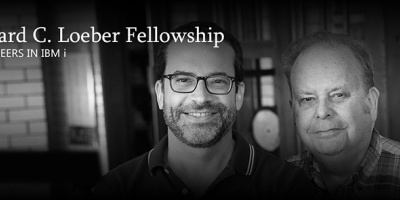Organizations today use many project management, quality management, and business management standards. I would like to briefly introduce five industry standards that are widely used and recognized in companies worldwide.
By Colleen Garton and Erika McCulloch
Editor's Note: This article is excerpted from chapter 2 of Fundamentals of Technology Project Management, by Colleen Garton and Erika McCulloch.
Part 1, Project Lifecycle, is available here. Part 2, Managing Each Step of the Project Lifecycle here.
The three parts to project management are:
- Standard/Framework
- Methodology
- Project Direction
These standards fit into the first category, Standard/Framework. You can apply more than one standard to a project. For example, you could use ISO and PMBOK® Guide at the same time. Even when using multiple standards, you still need a project methodology and project direction to effectively manage a project.
Project Management Institute (PMI)
The Project Management Institute was founded in 1967 in Pennsylvania, USA. Today, PMI is an international organization that develops professional standards and certification programs in project management. PMI has The Project Management Body of Knowledge (PMBOK® Guide), which is its project management bible. PMBOK® Guide is a collection of best practices combined into PMI’s nine knowledge areas that constitute the project standard. PMI and PMBOK® Guide are not industry specific. They are focused on generic standards that can be used in any industry (e.g., construction, pharmaceutical, automotive, software, financial). Chapter 18 contains information on how you can use this book in conjunction with PMBOK® Guide standards to effectively manage projects. You can find PMI on the web at http://www.pmi.org.
Office of Government Commerce (OGC)
In 1989, the United Kingdom’s Central Computer and Telecommunications Agency (CCTA), which has since been renamed Office of Government Commerce (OGC), created a project management standard called PRojects IN Controlled Environments (PRINCE®). The current standard, PRINCE2®, was published in 1996 and was last updated in 2009. PRINCE2 has become the primary project management standard used in the United Kingdom and many European countries in government and the private sector. The PRINCE2 standard is organized around eight processes.
PRINCE2 has been widely adopted in technology/IT project management. Designed to be industry independent, in recent years its popularity has been growing in other industries, such as finance and telecom. Chapter 19 contains information on how you can use this book in conjunction with PRINCE2 standards to effectively manage projects. You can find PRINCE2 on the web at http://www.prince-officialsite.com.
Six Sigma®
The term “Six Sigma” came into use in the early 1990s. Motorola invented Six Sigma and later created the Six Sigma Technical Institute, where they collaborated with companies such as Allied Signal, IBM, Texas Instruments, and Kodak to further develop the process.
Six Sigma is a data-driven and analytical approach to projects. It is designed to eliminate defects in any type of process, whether it’s a product or a service process. Achieving Six Sigma means that the process has no more than 3.4 defects per million opportunities. Six Sigma is non–industry specific and can be applied to processes in any type of organization. Six Sigma uses two methodologies: DMAIC (define, measure, analyze, improve, control), which is used to improve existing processes, and DSS (design for six sigma) or DMADV (define, measure, analyze, design, verify), which is used for designing new processes. Six Sigma has three levels of certification: green belt (GB), black belt (BB), and master black belt (MBB).
Six Sigma is used in hundreds of organizations today, such as Ford, General Electric, Kodak, Texaco, UPS, and the U.S. Air Force, to name but a few.
Software Engineering Institute (SEI) Capability Maturity Model Integration® (CMMI)
The Software Engineering Institute is a federally funded research and development center sponsored by the U.S. Department of Defense.
Capability Maturity Model Integration is designed to help organizations identify and improve the maturity level of their processes. There are five maturity levels:
- Initial: Processes are ad hoc and/or chaotic.
- Repeatable: Basic project management processes are in place.
- Defined: Business and technical processes are standardized and documented throughout the organization.
- Managed: Processes and quality are measured, analyzed, and managed.
- Optimized: Processes are predictable and effective, and continuous process improvement is part of the process.
Some organizations require that vendors be at a specific CMMI level before they will consider them for contracts. Many government departments, for instance, have this requirement. Hence, many companies working on military/government contracts use and maintain the process standards required by CMMI.
International Organization for Standardization® (ISO)
A group of representatives from twenty-five countries formed ISO in 1946. The goal was “to facilitate the international coordination and unification of industrial standards” (source: ISO, http://www.iso.org).
ISO primarily focuses on technical standards for both products and services and is used in both the public and private sectors. The standards require a repeatable process that yields consistent results. The desired results include meeting client, quality, and regulatory requirements, continual improvement of process and results, and high client satisfaction.
ISO is continually publishing new standards. In recent years, numerous standards related to project management have been developed. For example:
- ISO 15188: Project management guidelines for terminology standardization
- ISO 10006: Quality management systems—Guidelines for quality management in projects
- ISO/IEC TR 9294: Information technology—Guidelines for the management of software documentation
- ISO/IEC/IEEE 16326: Systems and software engineering—Lifecycle processes— Project management
- ISO 9000: Quality management systems—Fundamentals and vocabulary
- ISO/DIS 21500: Guidance on project management—due to be published late 2012
This is a small sampling of available ISO standards. You can review all ISO published and under-development standards on the ISO website at http://www.iso.org.
Want to learn more about project management best practices? Pick up your own copy of Fundamentals of Technology Project Management, by Colleen Garton and Erika McCulloch - available and on sale at the MC Press Bookstore today!

























 More than ever, there is a demand for IT to deliver innovation. Your IBM i has been an essential part of your business operations for years. However, your organization may struggle to maintain the current system and implement new projects. The thousands of customers we've worked with and surveyed state that expectations regarding the digital footprint and vision of the company are not aligned with the current IT environment.
More than ever, there is a demand for IT to deliver innovation. Your IBM i has been an essential part of your business operations for years. However, your organization may struggle to maintain the current system and implement new projects. The thousands of customers we've worked with and surveyed state that expectations regarding the digital footprint and vision of the company are not aligned with the current IT environment. TRY the one package that solves all your document design and printing challenges on all your platforms. Produce bar code labels, electronic forms, ad hoc reports, and RFID tags – without programming! MarkMagic is the only document design and print solution that combines report writing, WYSIWYG label and forms design, and conditional printing in one integrated product. Make sure your data survives when catastrophe hits. Request your trial now! Request Now.
TRY the one package that solves all your document design and printing challenges on all your platforms. Produce bar code labels, electronic forms, ad hoc reports, and RFID tags – without programming! MarkMagic is the only document design and print solution that combines report writing, WYSIWYG label and forms design, and conditional printing in one integrated product. Make sure your data survives when catastrophe hits. Request your trial now! Request Now. Forms of ransomware has been around for over 30 years, and with more and more organizations suffering attacks each year, it continues to endure. What has made ransomware such a durable threat and what is the best way to combat it? In order to prevent ransomware, organizations must first understand how it works.
Forms of ransomware has been around for over 30 years, and with more and more organizations suffering attacks each year, it continues to endure. What has made ransomware such a durable threat and what is the best way to combat it? In order to prevent ransomware, organizations must first understand how it works. Disaster protection is vital to every business. Yet, it often consists of patched together procedures that are prone to error. From automatic backups to data encryption to media management, Robot automates the routine (yet often complex) tasks of iSeries backup and recovery, saving you time and money and making the process safer and more reliable. Automate your backups with the Robot Backup and Recovery Solution. Key features include:
Disaster protection is vital to every business. Yet, it often consists of patched together procedures that are prone to error. From automatic backups to data encryption to media management, Robot automates the routine (yet often complex) tasks of iSeries backup and recovery, saving you time and money and making the process safer and more reliable. Automate your backups with the Robot Backup and Recovery Solution. Key features include: Business users want new applications now. Market and regulatory pressures require faster application updates and delivery into production. Your IBM i developers may be approaching retirement, and you see no sure way to fill their positions with experienced developers. In addition, you may be caught between maintaining your existing applications and the uncertainty of moving to something new.
Business users want new applications now. Market and regulatory pressures require faster application updates and delivery into production. Your IBM i developers may be approaching retirement, and you see no sure way to fill their positions with experienced developers. In addition, you may be caught between maintaining your existing applications and the uncertainty of moving to something new. IT managers hoping to find new IBM i talent are discovering that the pool of experienced RPG programmers and operators or administrators with intimate knowledge of the operating system and the applications that run on it is small. This begs the question: How will you manage the platform that supports such a big part of your business? This guide offers strategies and software suggestions to help you plan IT staffing and resources and smooth the transition after your AS/400 talent retires. Read on to learn:
IT managers hoping to find new IBM i talent are discovering that the pool of experienced RPG programmers and operators or administrators with intimate knowledge of the operating system and the applications that run on it is small. This begs the question: How will you manage the platform that supports such a big part of your business? This guide offers strategies and software suggestions to help you plan IT staffing and resources and smooth the transition after your AS/400 talent retires. Read on to learn:
LATEST COMMENTS
MC Press Online